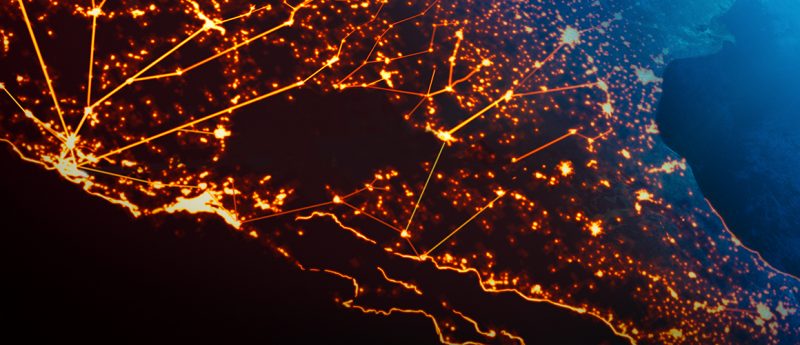
Predicting Power Outages by Understanding How Structures Fail

Self-organized criticality is a property of granular systems with interactions between components that sometimes trigger events such as power outages.
HRL Scientists Take a Step Closer to Understanding Self-Organized Criticality and Possibly Predicting Scale-Free Events in Networks with Interactive Elements
HRL Laboratories, LLC, has advanced understanding of an important property of statistical physics that soon may make it possible to calculate the likelihood of critical events such as power outages, earthquakes, or mudslides. HRL senior researcher Heiko Hoffmann determined that the property called self-organized criticality (SOC), which exists in certain interactive networks such as the tectonic plates in the Earth’s crust or the surface of a hillside, is affected by the topology of the network on which a critical event happens.
This additional understanding of network elements that affect SOC could enable statistical prediction of the critical event likelihood within a given network.
“No one knows what the general mechanisms behind self-organized criticality are, but in this paper we shed new light on this important property,” Hoffmann said. “If we can determine what these mechanisms are, it will enable us to predict the likelihood of large events, like power outages.”
Self-organized criticality is a property of granular systems, like a sand pile, with interactions between the components. Based on those interactions, there are sometimes events or fluctuations. For example, sand piles experience avalanches. With the tectonic plates of the Earth’s surface, the event is an earthquake. Power grids have similar fluctuations in the form of outages.
All these systems are structures of many interacting components. Systems that turn out to be self-organized critical have a few key characteristics, one of which involves having nonlinear interactions that typically involve threshold dynamics. This means that if the elements of a network pile or build up stress above a particular threshold, the elements tumble. If too many sand grains are piled atop each other, an avalanche occurs.
These structures also have an external driving force causing the threshold event, such as tectonic plates moving against each other and building up external stress, which when released drives the earthquake. With the sand pile, added sand grains increase the stress as they pile up and must be released by an avalanche.
Published in Physical Review E, a journal of the American Physical Society, this study provides new insights into the mechanism of self-organized criticality. Finding concrete mechanisms behind SOC phenomena will help strengthen the SOC definition, the understanding of where it occurs, and enable it to be exploited for application.
HRL Laboratories, LLC, California (hrl.com) pioneers the next frontiers of physical and information science. Delivering transformative technologies in automotive,aerospace and defense, HRL advances the critical missions of its customers. As a private company owned jointly by Boeing and GM, HRL is a source of innovations that advance the state of the art in profound and far-reaching ways.
Media Inquiries: media[at]hrl.com, (310) 317-5000